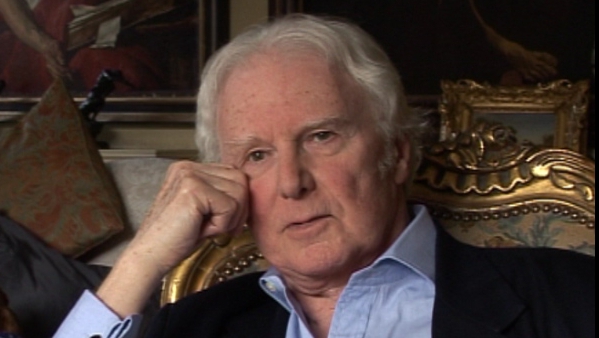NEXT STORY

Notable alumni of The Courtauld
RELATED STORIES

NEXT STORY

Notable alumni of The Courtauld
RELATED STORIES


|
Views | Duration | |
|---|---|---|---|
| 51. Titian's Assumption of the Virgin | 286 | 02:22 | |
| 52. Modern transport robs the traveller of the joy of discovery | 204 | 04:14 | |
| 53. Anthony Blunt and Johannes Wilde | 273 | 06:00 | |
| 54. How The Courtauld grew in prestige under Anthony Blunt | 250 | 04:58 | |
| 55. Notable alumni of The Courtauld | 225 | 01:13 | |
| 56. Working to fund my PhD | 201 | 04:42 | |
| 57. Too late to return to academia | 197 | 04:42 | |
| 58. Potential pitfalls in preparing an exhibition | 176 | 02:37 | |
| 59. Lost in translation: how not to compile a catalogue | 188 | 01:50 | |
| 60. Temperamental differences and a damaged Delacroix | 188 | 05:55 |


Under Anthony Blunt, The Courtauld rose from, let us say, nothing, an academic joke when the war came to an end in 1945, within five years or so, into being the most esteemed home of art history. Not only in England, where there were no rivals, but in the whole world. There was nothing like it. It was an extraordinary achievement as director to change it from what had been regarded by lots of people as a, sort of, rather flighty finishing school, into something which was profoundly serious and profoundly academic and better than anywhere else. Students from France and Germany and Italy came to it because it was the best place in Europe. Students from America came to it because it was renowned. And The Courtauld proved to be the breeding ground of a whole generation of really first-class, impeccable art historians and administrators, you know, people who look after museums and galleries and so on. Quite extraordinary to have achieved so much so quickly, and then to have sustained it for so long, because he… I’ve forgotten when he retired, but it was sometime in the mid-'70s, and so he’d had 20 years of sustaining The Courtauld Institute right at the peak of the discipline. And of course, once he’d gone, it immediately began to slip and even slide.
One means by which he achieved this, I think, was in having such a range of contacts amongst European art historians that none of them passed through London without coming to the Institute to give a lecture. And sometimes they had no command of English, and so they lectured in whatever their language was, and we might then be given a precis in English, hurriedly produced by Anthony or Johannes a day or two later, though we picked up what we could. But it meant that we had a kind of nodding acquaintance with every great art historian. And some of us moved on to the Warburg, which is associated academic institute, much more interested in ideas than in the art on which the ideas are based. And there were professors who were going there, too, from… to use the extraordinary library. And they, too, came to The Courtauld. So we were always being given these exciting gifts of scholarship from other sources. And sometimes, as with those of us who were studying 17th century Dutch painting, a really important professor like Gaston and van Gelder, would be asked to come and stay for a week, and give us tutorial after tutorial on the subject. And so I know of no other academic… no other university which could have done that. It was entirely because of the international fame of Johannes and the fame that Anthony attracted by being so good at his job. It’s never been the same since. You know, it’s almost measurable in its decline. It isn’t what it was. But there’s nothing else, nothing has replaced it.
Born in England, Brian Sewell (1931-2015) was considered to be one of Britain’s most prominent and outspoken art critics. He was educated at the Courtauld Institute of Art and subsequently became an art critic for the London Evening Standard; he received numerous awards for his work in journalism. Sewell also presented several television documentaries, including an arts travelogue called The Naked Pilgrim in 2003. He talked candidly about the prejudice he endured because of his sexuality.
Title: How The Courtauld grew in prestige under Anthony Blunt
Listeners: Christopher Sykes
Christopher Sykes is an independent documentary producer who has made a number of films about science and scientists for BBC TV, Channel Four, and PBS.
Tags: The Courtauld Institute of Art, Warburg Institute, Anthony Blunt, Johannes Wilde, Anthony Frederick Blunt, Gaston Diehl, Jan Gerrit van Gelder
Duration: 4 minutes, 58 seconds
Date story recorded: April 2013
Date story went live: 04 July 2013